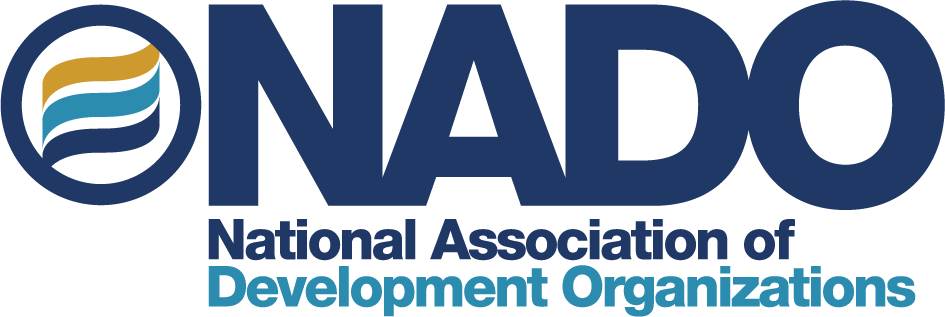The long-range transportation plan (LRTP) is a key document in guiding investment decisions and programming that occurs in regional or statewide transportation improvement programs (TIPs or STIPs). A requirement for states and MPOs, it is becoming more common for rural regions to develop a long-range plan under contract to the state DOT. These plans commonly contain a vision that looks 20 years into the future to guide shorter-term investment decisionmaking, and are often coordinated with the visioning and goal setting that occurs in other regional plans such as the CEDS.
A total of 102 organizations, or 57 percent of responding RPOs, complete a regional LRTP. The largest number of respondents (44 percent) completed their most recent regional transportation plan between 2009 and the present. Another 37 percent reported that their most recent regional transportation plan was completed between 2006 and 2008, and 13 percent completed their plan between 2000 and 2005. Approximately six percent of respondents completed their regional transportation plans before 2000.
The vast majority of organizations (93 percent) reported that their LRTPs are updated on a scheduled time frame. Almost half (46 percent) of regional transportation plans are updated every five years. Nearly one-quarter (23 percent) of plans are updated every two to five years, 17 percent are updated annually, and 8 percent are updated less frequently than every five years. A small number (7 percent) of plans are not updated on a schedule; instead, they are updated as needed or when funds are available.
LRTPs often are long documents that contain descriptions and maps of the region’s transportation assets, as well as data describing the region and its economy, population and other features. Because LRTPs are intended to provide a strategy to guide transportation investments, the scan identified eight elements of regional long-range transportation plans that may influence how projects are selected: policy statement, broad goal statement, objectives, quantitative targets, qualitative targets, list of projects, financial plan and reporting mechanism. Respondents indicated whether each element was developed primarily by the state DOT, jointly by the DOT and region, by the rural or small metro leadership (policy board or technical committee), or RPO staff.
- Policy Statement: 85 percent of respondents reported that their regional long-range plan includes a policy statement. In the majority of instances (51 percent), this element is developed by the regional transportation policy board or technical committee. It is not uncommon for this element to be jointly developed by the state DOT and the region (26 percent).
- Goal statement: 85 percent of respondents include broad goal statements in their regional LRTP. This element is most frequently developed by the regional transportation policy board or technical committee (43 percent) or jointly developed by the state DOT and the region (38 percent).
- Objectives: 85 percent of respondents reported that their regional long-range plan includes objectives. This element is most frequently developed by the regional transportation policy board or technical committee (47 percent) or jointly developed by the state DOT and the region (30 percent).
- Quantitative targets: 68 percent of respondents reported that their regional long-range plan includes quantitative targets. This element is most frequently developed jointly by the state DOT and the region (35 percent), the regional transportation policy board or technical committee (26 percent) or the regional planning staff (25 percent).
- Qualitative targets: 74 percent of respondents reported that their regional long-range plan includes qualitative targets. This element is most frequently developed by the regional transportation policy board or technical committee (46 percent), or jointly by the state DOT and region (27 percent).
- List of projects: 87 percent of respondents reported that their LRTP includes a list of major projects. This element is most frequently developed by the regional transportation policy board or technical committee (48 percent) or jointly by the state DOT and region (41 percent).
- Financial plan: 78 percent of respondents include a financial plan in their regional long-range plan. This element is most frequently developed jointly by the state DOT and region (41 percent) or the state DOT (23 percent).
- Reporting mechanism: 69 percent of respondents include a reporting mechanism in their regional long-range plan. This element is most frequently developed jointly by the state DOT and region (47 percent) or the regional planning staff (25 percent). In some cases, there is also a statewide dashboard or other reporting mechanism that reports on information relevant to RPO members’ interests.
The NADO Research Foundation explored whether particular characteristics of organizations affected the work completed on rural and small metropolitan transportation planning. Having an established MPO under the same organizational roof as an RPO, funding level, and years of existence as an RPO were analyzed to determine if those characteristics affected how LRTP elements are developed. From analyzing the scan responses, the following generalizations can be made:
- When an organization administers both an RPO and an MPO, regional transportation policy board or technical committees are less likely to have sole responsibility for developing the elements of regional long-range plans specifically mentioned above, such as goals and objectives
- However, when an organization administers both an RPO and an MPO, it is more common for elements of regional long-range plans to be jointly developed by state DOTs and regions (which may indicate stronger relationships among the regional stakeholders and state agency, as well as planning staff at the regional and state level), as does the development of plan elements by regional planning staff
- As the annual contract amount increases, regional transportation policy board or technical committees are more likely to have primary responsibility for the development of elements of regional long-range plans
- Although the joint development of elements of regional long-range plans by state DOTs and regions is widespread across the range of contract amounts, RPOs with smaller annual contracts are most likely to jointly develop elements of long-range plans with their state DOTs
- The older an organization, the greater the likelihood that elements of long-range plans will be jointly developed by state DOTs and regions
- The involvement of regional staff in the development of elements of long-range plans is more likely to occur in younger organizations
- There does not appear to be any relationship between the size of an RPO’s service area or population and the party responsible for developing elements of regional long-range plans
Of the 105 scan respondents who complete a long-range plan, 63 percent indicate that it is used to guide project selection and transportation project programming. Fifty-four percent say the state DOT considers their LRTP while developing the statewide long-range plan, and 35 percent of respondents have their regional long-range plan directly incorporated into the statewide plan—this includes states such as South Carolina, Virginia, and Washington. Of the respondents with an LRTP, 83 percent deliver it to the state DOT, 81 percent distribute the document to member local governments and stakeholders, and 54 percent share it with neighboring rural or metropolitan planning organizations.
In interviews conducted through the national scan, specific consideration was given to the issue of targets as an element of policy framework that is often identified as a hinge point in framing decisionmaking. A fairly large number of scan respondents indicated that they assign qualitative and quantitative targets to the goals (68 percent and 74 percent, respectively), however targets were not very visible in the review of planning documents that occurred in the course of this research. Individuals interviewed indicated that targets are generally process-oriented rather than system-oriented, such as adopting benchmarks regarding which planning partners are responsible for implementation. Desired outcomes for the transportation infrastructure tend to play a greater role as weighted criteria that are used in the identifcation of priority projects to recommend for the STIP, rather than being defined as targets in the rural LRTPs.
Alternatively, targets may be viewed as an issue area where the regional planning and projects support a statewide target rather than one formally adopted in the regional plan. For instance, safety is an issue area that is more commonly assigned a quantitative target. Several states have initiated a Toward Zero Deaths initiative through their strategic highway safety planning process. Some states are working to reduce traffic fatalities by a certain percentage over an amount of time, while others have actually adopted a zero deaths target. RPOs and small MPOs can also adopt the state’s performance structure in their regional plans by referencing the statewide goals, objectives, and targets in the regional planning documents. The regions’ efforts toward a set of shared safety goals and objectives is helping to reach the state’s target.
Analysis of planning documents reveals that mobility is one goal area that lends itself more to qualitative targets, as is economic development. For the latter, since permanent job creation (not construction jobs) as a result of infrastructure investment is often something that does not directly appear for several years after a project’s completion, it may be difficult to measure or estimate either through forecasting or reviewing the impact soon after project completion. However, economic development may be considered by proxy by qualitatively analyzing factors such as whether new or improved access to markets is a result of a project.
Return to Report Overview | Next >> Spotlight: Virginia’s Statewide and Rural Long-range Plans


